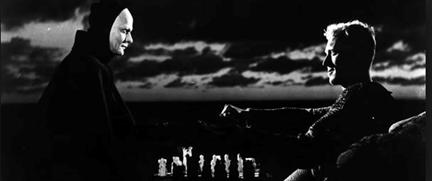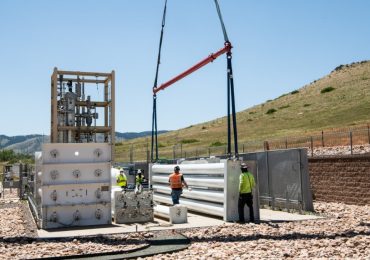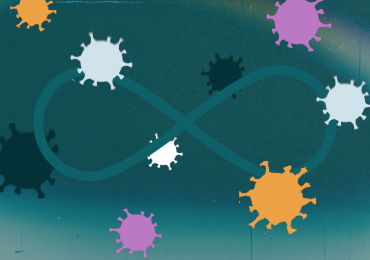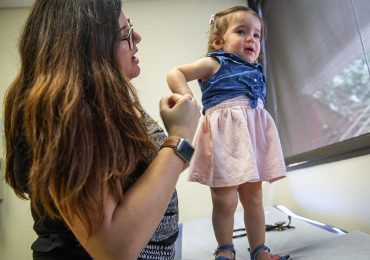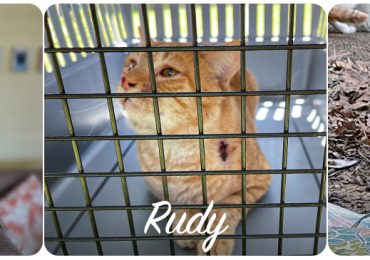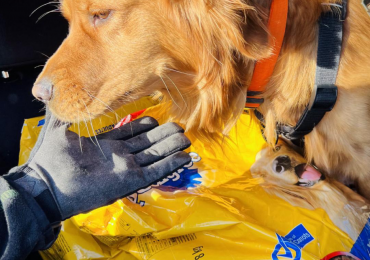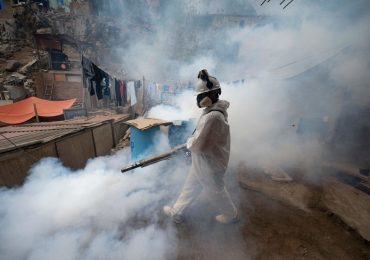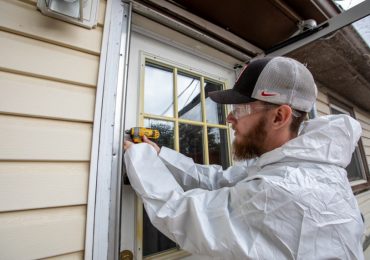By JEFF GOLDSMITH
On Christmas Eve 2014, I received a present of some profoundly unwelcome news: a 64 slice CT scan confirming not only the presence of a malignant tumor in my neck, but also a fluid filled mass the size of a man’s finger in my chest cavity outside the lungs. Two days earlier, my ENT surgeon in Charlottesville, Paige Powers, had performed a fine needle aspiration of a suspicious almond-shaped enlarged lymph node, and the lab returned a verdict of “metastatic squamous cell carcinoma of the head and neck with an occult primary tumor”.
I had worked in healthcare for nearly forty years when cancer struck, and considered myself an “expert” in how the health system worked. My experience fundamentally changed my view of how health care is delivered, from the patient’s point of view. Many have compared their fight against cancer as a “battle”. Mine didn’t feel like a battle so much as a chess match where the deadly opponent had begun playing many months before I was aware that he was my adversary. The remarkable image from Ingmar Bergman’s Seventh Seal sums up how this felt to me.
The CT scan was the second step in determining how many moves he had made, and in narrowing the uncertainty about my possible counter moves. The scan’s results were the darkest moment: if the mysterious fluid filled mass was the primary tumor, my options had already dangerously narrowed. Owing to holiday imaging schedules, it was not until New Years’ Eve, seven interminable days later, that a PET/CT scan dismissed the chest mass as a benign fluid-filled cyst. I would require an endoscopy to locate the still hidden primary tumor somewhere in my throat.
I decided to seek a second opinion at my alma mater, the University of Chicago, where I did my doctoral work and subsequently worked in medical center administration.
The University of Chicago had a superb head and neck cancer team headed by Dr. Everett Vokes, Chair of Medicine, whose aggressive chemotherapy saved the life and career of Chicago’s brilliant young chef, Grant Achatz of Alinea, in 2007.
If surgery was not possible, Chicago’s cancer team had a rich and powerful repertoire of non-surgical therapies. I was very impressed both with their young team, and how scripted, collaborative and protocol-driven their approach was to my problem. Vokes’ initial instinct that mine was a surgical case proved accurate.
The young ENT surgeon I saw there in an initial consultation, Dr. Alex Langerman performed a quick endoscopy and thought he spotted a potential primary tumor nestled up against my larynx. Alex asked me to come back for a full-blown exploration under general anaesthesia, which I did a week later. The possible threat to my voice, which could have ended my career, convinced me to return to Chicago for therapy. Alex’s endoscopy found a tumor the size of a chickpea at the base of my tongue. Surgery was scheduled a week later in the U of Chicago’s beautiful new hospital, the Center for Care and Discovery.
This surgery was performed on Feb 2, 2015, by a team of clinicians none of whom was over the age of forty (which I found thrilling). It was not minor surgery, requiring nearly six hours: resections of both sides of my neck, including the dark almond and a host of neighboring lymph nodes. And then, there was robotic surgery that removed a nearly golf ball-sized piece of the base of my tongue and throat. The closure of this wound remodeled my throat.
I arrived in my hospital room late that day with the remarkable ability to converse in my normal voice.
Thoughtfully, I was put in a quasi-isolation unit with two doors and negative air pressure. There was a consistent, very high level of focus on infection control throughout my stay. The next day, flushed with the news that no cancer had been found in any other lymph nodes, that there were clean, ample cuts around the tumors we knew about, and, best of all, that no follow-on chemo- or radiotherapy would be needed, I chatted away happily with two visitors for almost ninety minutes. I was repaid for this premature end-zone celebration with a siege of intense throat pain that lasted over a week. I was also repaid in a different way for the optimistic removal the next morning of the nasogastric tube installed during my surgery to feed and medicate me post-op.
My surgeon, Alex Langerman, was generous with his time. We had four visits in the hospital that I could remember and one which I couldn’t. He responded thoughtfully and substantively to my questions and concerns but delegated the day-to-day management of my care to his senior and junior residents. The senior residents, who were present in the OR, were as impressive as Alex was.
Some of the junior residents, however, literally phoned it in. On the second or third night, I woke up strangling on a large blood clot that had dislodged from the wound and blocked my airway. The anxious nurse in charge of my care paged the on-call resident who . . . didn’t answer the page in 90 minutes. Paged again, the resident scolded the nurse for bothering her and instructed the nurse to inform me that “breathing and swallowing problems were normal for this type of surgery” and refused to come in to the hospital to examine me.
At this point, I asked to speak to the resident on the phone, which prompted her to appear in my room thirty minutes later. She performed a perfunctory, fifteen-second examination, pressing down on my tongue with a depressor, but failing to examine my airway where a large piece of the clot was still lodged. Then she delivered a sour little lecture on how “breathing and swallowing problems were normal. etc.” and after documenting that she had showed up, ordered a swallowing study for the next day and vanished without taking any other action, not to be seen again. I eventually coughed up the rest of the clot myself and prayed it wouldn’t happen again.
The failure of on-call residents to respond to pages from the nurses caring for me was repeated later in my stay. Despite this inconstant clinical back up, I received thoughtful and attentive nursing care throughout my stay. (Sadly, the nurses seemed to spend twice as long typing into the numerous computers in the rooms and at the nursing station as they did actually caring for us).
However, the inadequate pain control regimen vital to my regaining my ability to swallow exacted a huge price. Originally, my pain meds were to be delivered through the nasogastric tube that bypassed my new throat. When the tube was removed the day after surgery, no thought was given to adjusting my pain control. Though I had a mild patient-controlled anesthesia through IV, I was expected to swallow my primary pain medication delivered in liquid form roughly every four hours.
As you might expect given the large wound in my throat, swallowing was a nightmare, particularly since the liquid pain medications seemed to be suspended in alcohol. I could not swallow them sitting up in bed, so I made a medication station out of my window sill. Even if I diluted them with water or a suspension of edible fiber, it took almost twenty minutes to down each dose of pain meds. Every tiny swallow brought a sharp stab, a hop and a yelp, followed by a spasm of painful coughing. Several days of protest brought a new idea: bitter ground up pain pills mixed with apple sauce! Chunks of pain medication and apple hung up in my throat, lodging on the wound.
Then the hospital entered the fugue state otherwise known as the weekend. A hospital stay expected to be seventy-two hours had stretched to six days, during which I was unable to eat and barely able to swallow even water, let alone therapeutic food. I lost more than seventeen pounds, mostly muscle, from my inability to eat. (This muscle loss contributed directly to the collapse of my left hip joint later in the spring by depriving a badly eroded arthritic joint of its supporting musculature. Escalating pain in both hips required two joint replacements in the ensuing eighteen months). I made an angry circuit of the massive, aircraft carrier sized hospital floor every few hours, pushing my IV stand alongside of me, weakening each day from the cumulative deficit of protein.
Finally, on Sunday evening, Alex called for a pain consult, which came on Monday morning, from a brilliant young anesthesiologist named David Dickerson. The result was a nearly complete victory: a combination of an anesthetic patch, local anesthetic mouthwash for the throat, a medication intended to numb the small nerves, and a strong liquid systemic painkiller to be used as needed. I was discharged within 36 hrs. able to swallow protein drinks for sustenance.
Unfortunately, within twenty-four hours, I was back in the University of Chicago ER for bleeding. I was readmitted for minor surgery to cauterize the wound in my throat, and also to remove fluid from one side of the neck. Finally, after recovering from the anesthesia, I was sent back to my physician’s house, which was my base camp during my Chicago stay. I flew home to Virginia two days later, on February 13.
The saga wasn’t over. Karen, my wife, stayed with me the first four days. Despite her constant presence, neither my wife nor my guardian angel hosts in Hyde Park were given discharge instructions. Karen was barely acknowledged by any member of the care team during her four days in the hospital, despite her impending role as my caregiver. I received my discharge instructions in a haze of elation and pain meds, and immediately tucked them away in my bag. When I arrived home in Charlottesville, exhausted from my eleven-day visit to Chicago, I showered and collapsed into my welcoming bed.
I awakened fifteen hours later with no feeling in the fingers of both hands. I also found nearly two-inch blisters on my heels from lying on my back for fifteen hours. Karen, a florist, was preoccupied by Valentine’s Day, her busiest day of the year, and my son, Trevor, who came to stay, was reluctant to disturb me. Six months later, I still had no feeling in the two outer fingers of my right hand, needless collateral damage from my treatment. I basically lost my ability to type. This avoidable complication was eventually addressed with a six-hour nerve grafting surgery at Washington University in St. Louis in October, 2015.
I’d been warned by several of my policy colleagues about selecting Medicare Advantage when I turned sixty-five. “Wait ‘till you get sick”, they sagely warned me.
In fact, my carrier, Humana, did not delay my course of therapy by five minutes, and rapidly approved my personal decision based on medical advice to seek cancer care from an NCI designated Comprehensive Cancer Center five hundred miles from home and “out of network” for my Virginia-based plan.
Unfortunately, the MA approval process placed a huge clerical/administrative burden on my Charlottesville-based primary care physician Jeff Davis, whose long-suffering office staff was required to initiate requests for authorization for every single stage of the diagnosis and treatment, a process which consumed nearly two person days of administrative time. I did get regular check-ins from a Humana nurse for several weeks after the procedure and a big shipment of frozen meals. But otherwise, my Medicare Advantage plan added no value to my cancer care, and grossly underpaid the University of Chicago for my care. The hospital was paid $15,000 under their Humana MA contract for my total care, not counting Alex’s surgical fee, for complex surgery, and eight day hospital stay and an emergency readmission.
The surgical care I received at the U of C was a triumph, both thorough and definitive. It saved my life. However, the follow up pain management and the discharge process and post-surgical recovery were disasters, both from a patient experience (fed back with verve on my HCAHPS survey!) and a cost standpoint–length of stay more than twice expected and an emergency readmission on top of it.
The diffusion of responsibility throughout the complex care episode, and consequent lack of ownership of my recovery by the clinical team, was the root cause of much of this gap. An additional learning for me: much of the risk of any clinical intervention is borne by the family after the intervention is over. And the failure to prepare my family for its role had direct consequences for me in future surgical episodes that would have been unnecessary a better scripted episode.
A recent commenter on LinkedIn compared the “consumer” of healthcare to a person gorging on Baked Alaska in a restaurant where someone else picked up the bill. Given my own frightening experience with cancer, I found this characterization insulting and demeaning. I wasn’t “consuming” anything; I was drowning! My central challenge was finding someone I could trust to save my life. Would I have chosen someone I did not know or trust, but whose services were less costly, to rid me of my cancer? Not on your life.
Economist Kenneth Arrow wrote sixty years ago that one thing that distinguishes medicine from other things our economy does is that illness is not only unpredictable, but also an “assault on one’s personal integrity”. Responding to that uncertainty is the toughest job in our economy. I was and remain deeply grateful to my clinical team for saving my life.
I am now nine years cancer free, and sobered by how fraught and complicated my care experience was. It is hard to describe how much fear and uncertainty I felt, even in my home institution, despite forty years of working experience in and around hospitals. When I hear marketing experts prattle on about the “consumer’s care journey”, it just makes me want to throw up.
Jeff Goldsmith is a veteran health care futurist, President of Health Futures Inc and regular THCB Contributor. This post comes from his personal substack
Leave a comment

